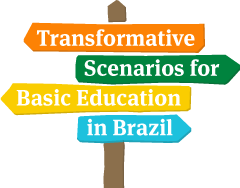Canary
In the Canary scenario, the Brazilian educational system is undergoing major changes. The goals of the National Education Plan-NEP (2014–2024) are almost all being attained, due largely to actions driven by the State, pressured and held to account by civil society. This interaction contributes to progress in public education. With the focus on attaining the NEP goals, the culture of discontinuity of educational policies is interrupted. The State plays a fundamental and strategic role in guaranteeing the right to education. The concept of education is anchored to official and formal public policies, based on laws, and created and negotiated in participation with civil society. Although the State is responsible for providing education, there is space for other initiatives. Clear parameters are established to determine the relationship between what is public and private in education, thereby regulating private initiative. This happens because the school community, the educational community and society demand the prioritization of education: there is strong social participation and control of public policy. The management of schools is democratic and education plans are developed, tracked, monitored and enhanced using a participatory approach, through education forums and conferences. The majority of schools have a predominantly traditional format although some innovative experiences exist. They have the role of democratizing access to knowledge and guaranteeing the appropriation of culture. Discrimination and prejudice in the school and in educational policies persist, but educational inequalities significantly decrease. The increase in quality of public schools increases enrollment of the middle class in establishments built and maintained by the State.
The canary is the symbol for this scenario. It can be found throughout Brazil, was an endangered species but is regaining its space. The canary is used to living in flocks, is concerned with the collective, fights for space, is territorial and has an efficient feeding technique, that does not disperse seeds.

